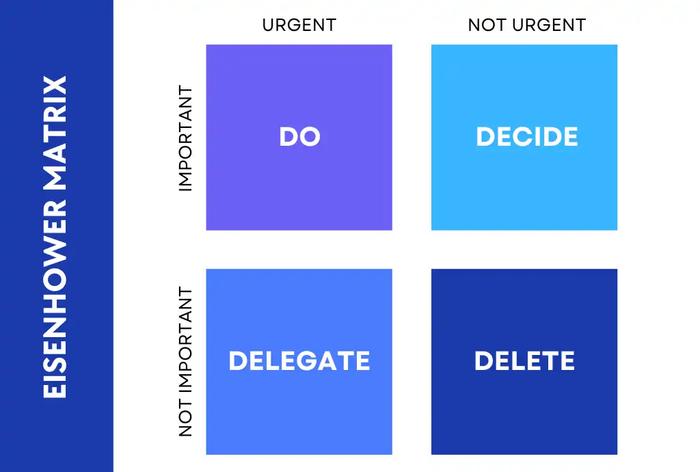Sales come in various forms and sizes, but one thing remains constant: the importance of managing key accounts effectively.
A well-crafted key account management strategy can be the difference between a thriving business and a struggling one. So you need to know what it is, the elements that go into it and how to build your own strategy.
What is key account management?
Key account management is the practice of building strong, long-term relationships with your most valuable customers. It’s an excellent way to foster loyalty and drive revenue growth.
Why is it beneficial to introduce key account management?
Key account management is important to each and every company. So, you need to identify a strategic account management program within your organization.
Let's find out why:
#1 Increased customer loyalty
When account managers focus on key accounts, they're not just making sales – they're building relationships. And building relationships leads to building loyalty.
Loyal customers become advocates for your brand. This is where customer satisfaction intersects with customer loyalty, creating a virtuous cycle that benefits both parties, and brings you repeat business.
#2 Higher revenue (also for account managers)
Let's talk numbers. Key accounts are often the lifeblood of your revenue stream, which is why you have to look after these relationships.
Having dedicated account managers who nurture these partnerships helps you to maximize the lifetime value of these customer accounts. The sales team can focus on upselling or cross-selling – which is beneficial for the company and increases their commission.
#3 Efficient resource allocation
In the world of account management, time is money. Effective account management allows you to allocate your resources – be it account executives, trusted advisors, or customer service reps.
This allows them to go where they'll make the most impact. It’s about investing your time and energy in a way that yields the highest returns and makes your account management team a strategic asset rather than a cost center.
#4 Competitive advantage
In a crowded marketplace, how do you stand out? The answer lies in how well your account managers communicate and build relationships. A strong key account management process gives you a competitive edge. It sets you apart from most businesses that might offer similar products but lack the personalized service that key account managers can provide.
Understanding these benefits, you'll see why account management is important for long-term success. It's not just a sales strategy; it's a philosophy that puts client relationships at the heart of everything you do.
Key account management vs regular account management
Understanding the nuances between the two can be the difference between average and successful account management.

Let's dig in:
Focus on long-term relationships
In key account management, the account manager focuses on building long-lasting relationships that go beyond the transactional nature often seen in regular account management.
The best account managers know that these long-term partnerships are not just about meeting client expectations but exceeding them. This focus on customer communication, client satisfaction and retention is what sets key account management apart.
Customized solutions
When it comes to client accounts, one size definitely does not fit all. Key account managers work closely with internal teams to develop customized solutions that meet the unique needs of each strategic account.
In contrast, regular account management responsibilities cover offering more generic solutions. This means they often miss out on opportunities for cross-selling and upselling that come from a deeper understanding of customer needs.
Strategic importance
Key accounts often have a ripple effect, influencing product development, industry trends, and even the account management process itself. Regular accounts, while important for cash flow, don't usually have the same level of impact on your business strategy.
Resource allocation
In key account management, resource allocation goes beyond just assigning an account executive. It involves a dedicated account management team that collaborates to provide actionable insights, improve customer satisfaction, and maximize retention.
Regular accounts might not receive this level of attention, which can be a missed opportunity for building stronger customer relationships. By understanding these distinctions, you'll be better equipped to manage your client relationships, whether you're dealing with large accounts or smaller ones.
How to nail key account management in nine steps
So, you're an account manager, and you've got your eyes on the prize: building strong relationships with your key accounts. But let's be real, juggling new customers, internal teams, and your sales process can make your head spin.
Nailing your account management responsibilities is the way to go here. Stick around, and we'll walk you through how to become the trusted advisor your clients can't do business without.
Step 1: Identify key accounts
We’ve already established that key accounts are those that contribute significantly to your revenue. And chances are that only a few accounts will meet these criteria for you, so first, identify these specifics and then identify the accounts.
For example, if you're in the SaaS industry, you could look for clients who:
- contribute to more than 5% of your MRR,
- become your brand ambassadors,
- have been with you for more than 12 months, just to name a few criteria.
The identification process should involve multiple departments, including sales, customer service, and finance, to get a holistic view.
Step 2: Segment key accounts with Eisenhower matrix
So, you've got your list of key accounts. Great! Now, how do you decide where to focus your energy first? That's where the Eisenhower matrix comes in handy.

This simple yet powerful tool helps you categorize your key accounts into four quadrants based on urgency and importance.
- Urgent and Important Clients: These are the high-stakes accounts that you can't afford to neglect. You need to do it now. For example, let's say you're in the manufacturing sector and a long-term client suddenly places a large, urgent order. This client would fall into this quadrant, signaling that they need immediate attention to fulfill the order and maintain the relationship.
- Important but Not Urgent Clients: These are accounts that are valuable in the long run but don't require immediate action. Maybe it's a client who consistently places large orders but has a long lead time. You'll want to allocate resources to nurture these relationships, but there's no fire to put out right now. You can decide later.
- Urgent but Not Important Clients: These accounts may demand a lot of your time but offer lower returns. They're the ones who always have a crisis but never seem to grow their business with you. Handle their issues promptly but don't let them consume all your time. Consider delegating.
- Neither Urgent nor Important Clients: These are your lower-priority accounts. They might be smaller clients or those that are relatively stable but offer little opportunity for growth. Keep them on the radar but don't invest significant resources unless their status changes. Likely they never were or never will be within your strategic account management range, so you can remove them from your key account management action plan.
By categorizing your key accounts this way, you'll have a clearer picture of where to focus your efforts.
Step 3: Develop a key account manager plan
So, you've got your key accounts lined up, and you're ready to make some magic happen. But any good account manager knows that you need more than enthusiasm – you need a plan.
First off, set some concrete goals. Are you looking to upsell a premium service? Or maybe you're aiming to improve customer retention by 15% over the next quarter? Whatever it is, make it specific and measurable.
KPIs are your roadmap here. You can't just say you want to "improve customer experience"; you need metrics. Think customer satisfaction levels or Net Promoter Scores – both being great starting points.
And don't forget about upselling and cross-selling opportunities. Here, adding real value to clients is more important than padding your numbers.
For instance, if you're in the hospitality industry and you notice a key account always books conference rooms, why not offer a package deal that includes catering? It's a win-win.
Step 4: Prepare a reach-out strategy to build stronger relationships
You can't just shoot off an email whenever you feel like it to strengthen existing client relationships. This, like everything else, requires a strategy.

Think about cadence here. Whether it's a bi-weekly check-in or a monthly performance review, keep it consistent. Don't be that annoying account manager who's always in the client's business face. But don't be a stranger, either. The frequency might completely depend on a particular client, and their specific schedule.
For example, some valuable accounts might want to be entertained all the time. Others might find it irritating.
Next, frequency should be matched with channels. Emails, calls, even LinkedIn messages — use them all, but wisely. Let's say you're in retail. A monthly in-person visit could work wonders, especially if you bring in samples of a new product line. If you call the same client every other day, they may get annoyed and even churn.
Step 5: Deliver tailored solutions based on the data
Key account management is not a one-size-fits all solution. You've got a treasure trove of customer data at your fingertips, so use it to deliver solutions that hit the mark.
Start by diving into that data. Any interesting usage patterns or survey answers that can guide you? Maybe you've noticed that a key account always uses a specific feature of your software right before their quarterly reviews? That's an insight you can act on.
Then, don’t just offer any solutions. The best account manager always crafts their own solutions – and that’s far from throwing every feature and service you offer at the client. Pick the right ones that align with their business goals.
For example, if you're in the healthcare sector and a key account has been struggling with patient engagement, consider introducing them to your new telehealth feature.
Step 6: Negotiate the terms
Now comes the part that separates the rookies from the pros: contract negotiations. This is where your communication skills really come into play and can translate into customer success.
First, know what you can offer and what you can't. Maybe you can't budge on the price, but you can offer faster delivery or better terms. As part of a transactional relationship with potential customers, it's important to listen to their needs and be willing to compromise.
Next merge this information to match it with the client's expectations. If you've done your homework, you'll know what they're looking for and can meet client expectations without giving away the farm.
For example if you're in the tech sector and your client is pushing for 24/7 customer support, maybe you can offer a dedicated account executive instead.
Step 7: Close the (new) deal
You've negotiated like a pro, and now it's time to close that deal. Closing is not just about getting a signature on a contract. It might seem to be a one-off, but it’s not. By closing this new deal, you pave the way for a long-term, strategic account relationship.
Make sure all internal teams are aligned. Your sales process should be a well-oiled machine by this point, involving not just you, the account manager, but also project managers and even account executives if needed. You can use a mutual action plan to facilitate this process.
Step 8: Monitor account health for customer satisfaction
The work of account managers is never done. Now comes the part that's just as important: monitoring account health.

This is where customer success metrics become important. Are your clients happy? Are they using your product or service to its full potential? Do you meet customer expectations? Regular check-ins can help account managers gauge customer satisfaction and make necessary adjustments.
Step 9: Rinse and repeat
You've navigated the complex waters of account management and come out on top. But remember, this isn't a one-and-done deal. Account management is an ongoing process, and happy customers today might be ex-clients tomorrow.
The key to client retention is consistency. Keep delivering on your promises and you won't just retain customers – you'll turn them into advocates. This is how you get repeat business and grow larger accounts.
And don't forget, always be on the lookout for new clients and potential customers. Most businesses can't survive on fewer accounts, and they need to continuously add more to the mix.
The role of CRM in strategic account management
When it comes to strategic account management, a robust CRM system like Capsule can be what you need to generate more than one happy customer.
Let's check how Capsule can elevate your key account management game, shall we?
Account contact management for happy customers
First off, Capsule excels in contact management. It allows account managers to keep all customer information in one place, making it easier to track conversations and deliver personalized experiences.
An account manager who knows the last product your client inquired about or their preferred communication channel is bound to be successful. That's how you make a customer happy – but that’s also what your customers expect you to know.
Sales pipeline for more business
The sales pipeline feature in Capsule is designed to help account managers win even more sales. It enables them to tailor their pipeline to match their sales process. This is particularly useful for new clients who are still in the 'getting to know you' phase. A well-managed pipeline can help you identify cross-selling or upselling opportunities, leading to more business.
Workflow automation for efficient account manager responsibilities
Capsule offers workflow automation to cut out the busy work. This feature is invaluable for account managers balancing multiple responsibilities. For example, if you're a project manager as well, automating follow-ups or reminders can free up your time for more strategic tasks.
Integrate with internal teams
Among the most impressive features of Capsule is its seamless integration with other tools and internal teams. Whether it's finance, customer service, other account managers, or product development, everyone can have access to the same customer data. This ensures that client expectations are not just met but exceeded.
Tackle that strategic account management!
Capsule offers a range of features that make account management effective. From nurturing existing client relationships to acquiring new customers, it's a one-stop solution for all account managers.
So, if you're an account manager or executive looking to up your CRM game, try Capsule CRM free for 14 days. It's not just about managing an account – it's about becoming a trusted advisor in your client's journey.




